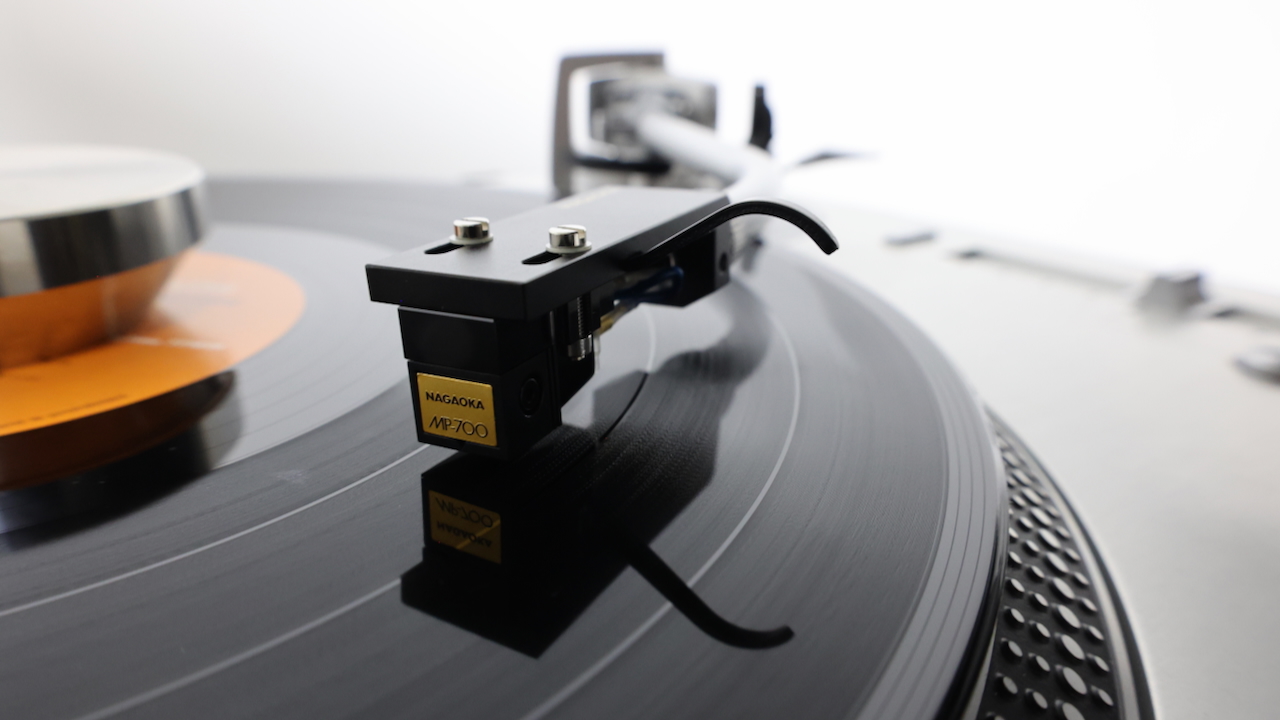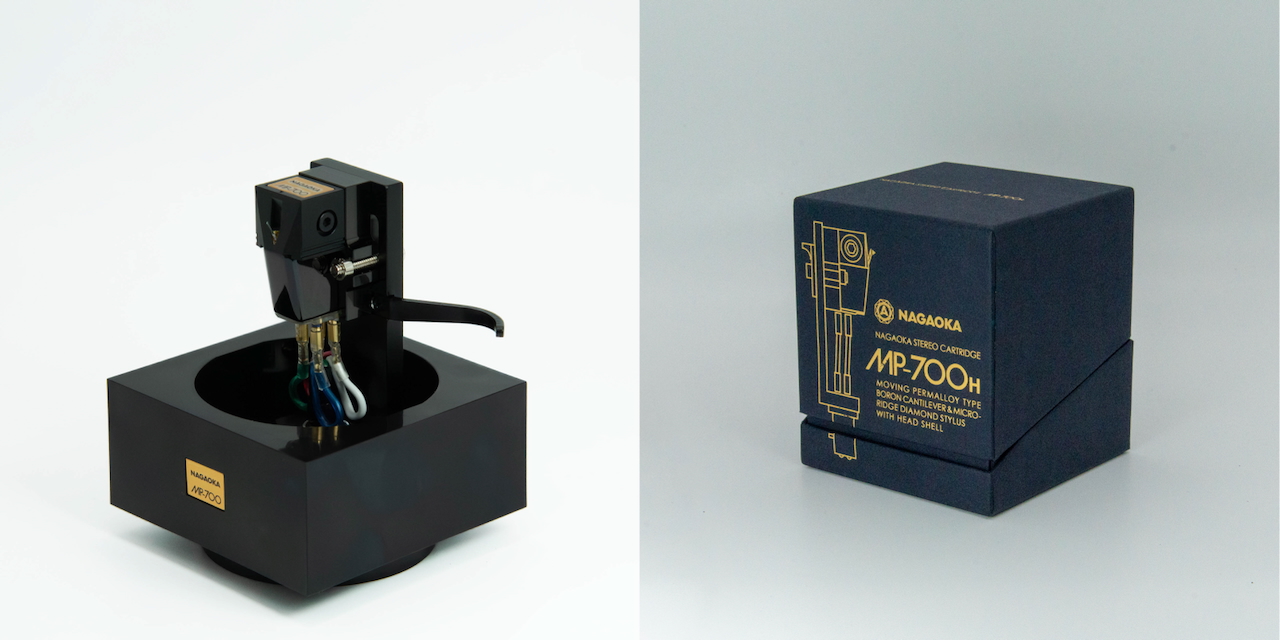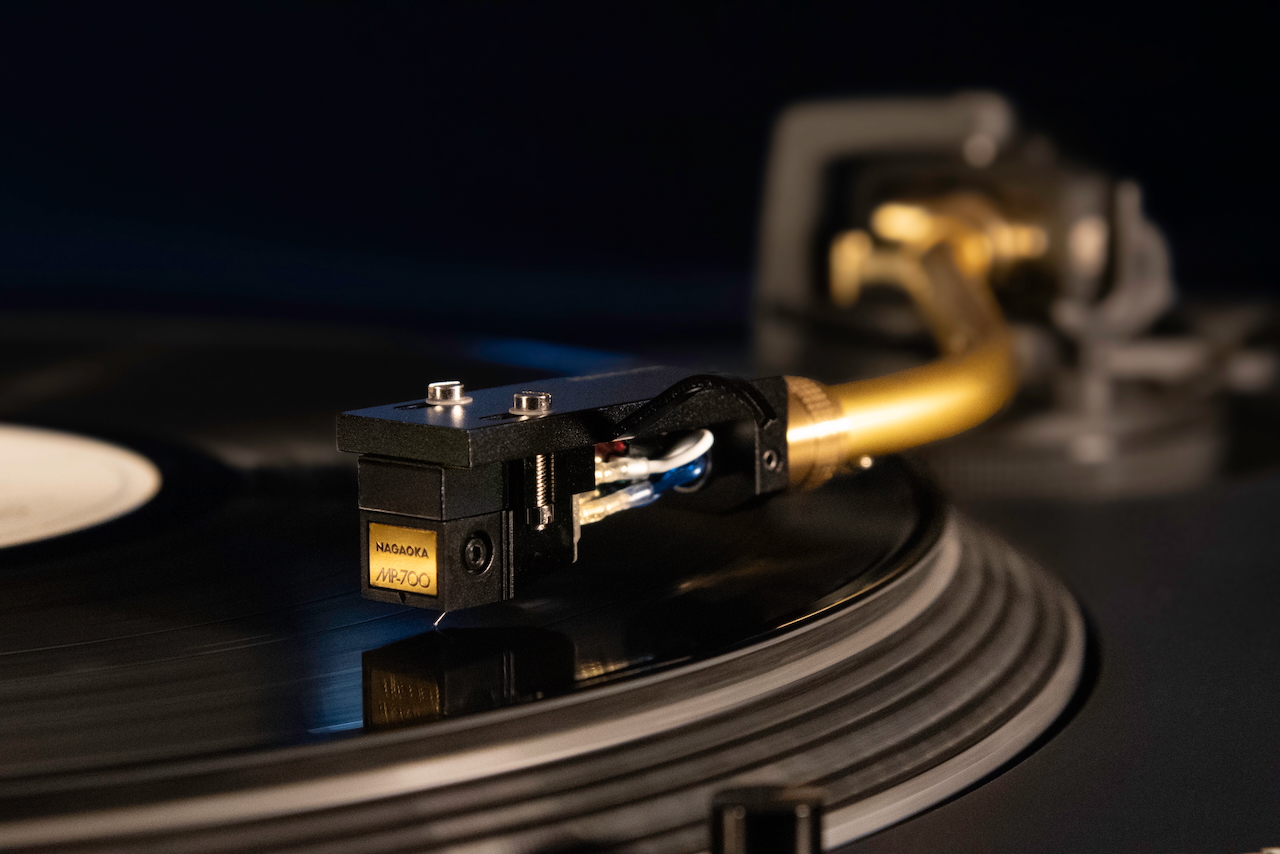User Review of the NAGAOKA Cartridge MP-700H – Part I: Break-In Phase

We admit it – we wouldn’t say anything bad about the Nagaoka MP-700H, but could we even do that?
Nagaoka isn’t exactly known for constantly launching new products. And why should they – reinventing the wheel isn’t on the agenda. Besides, the manufacturer, who incidentally is responsible for a large share of the needles used worldwide, offers a clean, solid range of good cartridges in the price class up to €1,000. The new MP-700/MP-700H now goes beyond this mark. What defines the new cartridge? How does it behave during break-in? What are its strengths and weaknesses? This is not a comprehensive test but rather a user review of the MP-700 in a solid hi-fi setup.
Straight out of the box, mounted on a Technics SL-1200M7L and properly aligned, two things immediately stand out: first, the relatively low tracking force of 1.4 g is unusual for an MI cartridge, and second, the solid aluminium headshell with its extra weight means we first have to add an auxiliary weight to the Technics arm to be able to balance it at all. Once that’s done, we brace ourselves for the worst, since Nagaoka cartridges really come into their own only after a certain break-in period. But we have a completely new experience: the cartridge is more friendly than stubborn, more open to (almost) anything you feed it than skeptical and reserved. It feels less like something that wants to be conquered and more like something trying to make itself at home.

Break-In Period
Of course, out of the box the MP-700H sounds flat and not very brilliant, but the first tone already suggests a sense of promise. That first sound comes from A Very Lonely Solstice by Fleet Foxes – acoustic guitar, a choir at the start, and Robin Pecknold’s bright voice. All of it in a church – clear and distinct – with a slight hint of three-dimensionality, right out of the box. The Arctic Monkeys’ Whatever People Say I Am, That’s What I’m Not isn’t exactly typical audiophile fare for judging a cartridge’s quality, but the record has surprising moments that the Japanese stylus teases out effortlessly. For example, when the slightly jazzy, meandering guitar in Fake Tales of San Francisco pans from left to right, or the first time Alex Turner’s voice climbs out of its boxy enclosure on Riot Van, singing about the fate of a few rebellious youths. The MP-700H has barely two hours of playing time on it, and you can hear it settling in – with real confidence. Tom Waits then expands the space even further with Swordfishtrombones, putting bass with real life into the room.
The audio system used for testing is relatively simple: integrated amplifier: Audionet Sam V2, Technics SL-1200M7L (as mentioned), Linn phono stage, and two-way speakers from Fischer. Power is supplied by an older Transparent PowerIsolator.
What’s inside?
The MP-700H owes its existence to a young developer who first took a close look at the Japanese manufacturer’s cartridges before daring to create the flagship model in the Nagaoka lineup. The result is a cartridge that expands on Nagaoka’s manufacturing principles in several ways. At the front, a polished Micro-Ridge diamond does its job, extracting the finest details while delivering maximum authenticity. The softer suspension damping improves responsiveness, which often comes at the cost of control. Here, a special suspension wire is used that effectively counters uncontrolled movement without negatively affecting the damping. This teamwork is protected by a housing with a triple surface treatment that reduces static buildup and increases heat resistance.

And back to music
Even if it doesn’t really make sense to put on Stravinsky’s Le Sacre du Printemps with Leonard Bernstein conducting at this early stage – we’re curious. Especially after the already rather brilliant playback of Tom Waits’ Rainbirds, the last track on side two of Swordfishtrombones.
We’re not disappointed in our expectation of being disappointed – but of course, we know better. The opening sounds harsh and uncomfortable – no, not Stravinsky’s composition or the New York Philharmonic – it all sounds a bit cardboardy and restrained. But only a short time later, the spring seed brutally bursts from the ground, with the low strings and so-called wind section surging forward with unexpected force – without forgetting the details. No question, the large orchestra still doesn’t sound as you’d expect from a cartridge in this class, but you wouldn’t expect a fourth-grader to deliver a dissertation on Kafka either (sure, even fourth-graders know how to use ChatGPT) – we’re still in the break-in phase.
To find out what it’s capable of in “upper school,” we’ll let the MP-700H break in a bit longer, since the rule still applies: Nagaoka cartridges need more time. However, this newcomer is already showing very advanced and promising development after just a short period.
